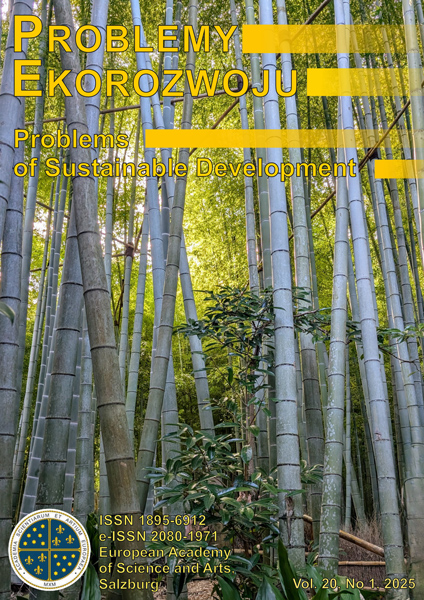Environmental Regulation and Employment: Evaluating the Role of Water Pollution Prevention and Control Law in China
Wei Yu
School of Management, Nanchang University, Nanchang, 330031, China; Copernicus Institute of Sustainable Development, Utrecht University, Heidelberglaan 2, 3584 CS Utrecht, The Netherlands (China)
Xiao Liu
yilvqingxin@163.comSchool of Economics & Management, Tongji University, Shanghai, 200092, China (China)
Abstract
In this paper, we investigate the impact of environmental regulations on employment in China. We apply a quasi-natural experiment on the revision of Water Pollution Prevention and Control Law in 2008 (WPPCL2008), and we analyze manufacturing sectors’ reaction to WPPCL2008 by using a differences-in-differences approach based on China’s thirty five sectors at the 2-digit level from 2003 to 2014. Our results show that although environmental regulations can reduce waste-water emissions, at the same time cause a decrease in employment. The results suggest that stringent environmental regulation is not cost free. Furthermore, this finding contradicts the popular view that the effect of Chinese legislation enforcement is insignificant.
Keywords:
environmental regulation, differences-in-differences, employment, Water Pollution Prevention and Control Law (WPPCL)References
ALLERS M.A., HOEBEN C., 2010, Effects of unit-based garbage pricing: a differences-in-differences approach, in: Environmental and Resource Economics 45, p. 405-428.
Google Scholar
AMBEC S., COHEN M.A., ELGIE S., LANOIE P., 2013, The Porter hypothesis at 20: can environmental regulation enhance innovation and competitiveness? in: Review of Environmental Economics and Policy 7 (1), p.2-22.
Google Scholar
BEZDEK R.H., WENDLING R.M., 2005, Potential Long-term Impacts of Changes in US Vehicle Fuel Efficiency Standards, in: Energy Policy 33(3), p.407-419.
Google Scholar
DESCHENES O., 2010, Climate Policy and Labor Markets, in: NBER Working Paper No. w16111.
Google Scholar
CURTIS M., 2012, Who loses under power plant cap-and-trade programs? Estimating the impact of the NOx Budget Trading Program on manufacturing employment, in: Working Paper, Georgia State University.
Google Scholar
HAFSTEAD M.A.C., WILLIAMS III.R.C., 2016, Unemployment and Environmental Regulation in General Equilibrium, in: Resources for the Future Discussion Paper, P. 15-11.
Google Scholar
HARRISON R., JAUMANDREU BALANZO J., MAIRESSE J., PETERS B., 2014, Does in-novation stimulate employment? A firm-level analysis using comparable micro-data from four European countries, in: International Journal of Industrial Organization 35, p. 29-43.
Google Scholar
HAWAWINI G., SUBRAMABIAN V., VERDIN P., 2003, Is performance driven by industry – or firm-specific factors? A new look at the evidence, in: Strategic Management Journal 24, p.1-16.
Google Scholar
HORBACH J., RENNINGS K., 2013, Environmental innovation and employment dynamics in different technology fields-an analysis based on the German Community Innovation Survey 2009, in: Journal of Clean Production 57, p. 158-165.
Google Scholar
KAHN M.E., MANSUR E.T., 2013, Do Local Energy Prices and Regulation Affect the Geographic Concentration of Employment? in: Journal of Public Economics 101(1), p. 105-114.
Google Scholar
LACHENMAIER S., ROTTMANN H., 2011, Effects of innovation on employment: a dynamic panel analysis, in: International Journal of Industry Organization 29, p.210-220.
Google Scholar
MOULTON B.R., 1990, An illustration of a pitfall in estimating the effects of aggregate variables on micro units, in: Review of Economics and Statistics 72(2), p.334-338.
Google Scholar
NUNN N., QIAN N., 2011, The Impact of Potatoes on Old World Population and Urbanization, in: Quarterly Journal of Economics 126(2), p.593-650.
Google Scholar
PAVITT K., 1984, Sectoral patterns of technical change: towards a taxonomy and a theory, in: Research Policy 13, 343-373.
Google Scholar
RENNINGS K., ZIEGLER A., ZWICK T., 2004, The effect of environmental innovations on employment changes: an econometric analysis, in: Business Strategy and Environment 13, p. 374-387.
Google Scholar
WALKER R., 2012, The Transitional Costs of Sectoral Reallocation: Evidence From the Clean Air Act and the Workforce. in: US Census Bureau Center for Economic Studies Paper No.CES-WP-12-02.
Google Scholar
WANG H., JIN Y., 2007, Industrial Ownership and Environmental Performance: Evidence from China, in: Environmental and Resources Economics 36, p.255-273.
Google Scholar
WANG H., MAMINGI N., LAPLANTE B., DASGUPTA S., 2003, Incomplete Enforcement of Pollution Regulation: Bargaining Power of Chinese Factories, Environmental and Resource Economics 24(3), p.245-262.
Google Scholar
WEI Y., QIANG C.H., 2015, Environmental regulations and industrial performance: evidence from the revision of Water Pollution Prevention and Control Law in China, in: Problemy Ekorozwoju/ Problems of Sustainable Development 10(1), p. 41-48.
Google Scholar
Authors
Wei YuSchool of Management, Nanchang University, Nanchang, 330031, China; Copernicus Institute of Sustainable Development, Utrecht University, Heidelberglaan 2, 3584 CS Utrecht, The Netherlands China
Authors
Xiao Liuyilvqingxin@163.com
School of Economics & Management, Tongji University, Shanghai, 200092, China China
Statistics
Abstract views: 27PDF downloads: 10
License

This work is licensed under a Creative Commons Attribution-ShareAlike 4.0 International License.




